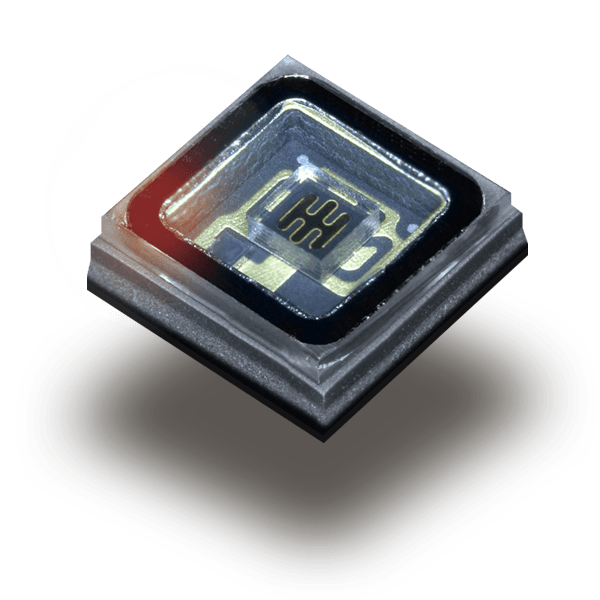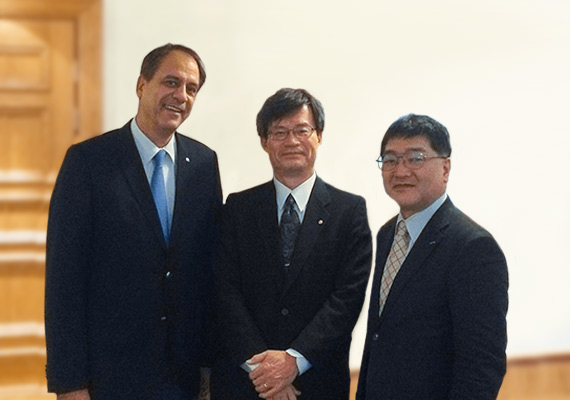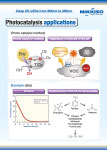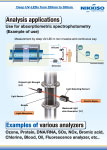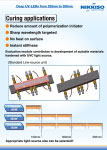Description
The key technologies currently being developed at Nikkiso find synergies with the practical strengths of the various areas of development at LEWA.
Together we are creating opportunities for the future for our customers. A recent example in the field of photonics is the development and series production of deep ultraviolet LEDs. These had been developed jointly with the Nobel Prize 2014 winners, professors Isamu Akasaki and Hiroshi Amano at the University of Nagoya over a period of eight years.
In 2014 Nikkiso and its research group Nikkiso Giken began their own mass production of high-quality AlGaN-based DUV diodes. In parallel to this, work is underway on further development and preliminary application development for a variety of industrial applications.
The first joint developments with LEWA in the field of medicine/life sciences can be seen in LEWA products for the clean process market (e.g. online photometric measurement of protein, DNA and RNA measurement and disinfection/sterilization).
Technology
DUV LEDs have many advantages over conventional UV light sources such as mercury vapor lamps. Since they are a solid-state technology, these LEDs offer a specific, selectable emission wavelength, a long service life and low operating voltages.
They can be switched on and off with instant effect, are resistant to shocks, are easy to integrate (flexibility of design and simple actuation electronics) and are environmentally benign (no hazardous substances such as mercury and no ozone emissions). Moreover the performance of the LEDs has substantially increased in recent years, which is making their potential applications more and more interesting (water treatment, measurement systems, paint curing).
Application examples
Fields of application for DUV LEDs include environmental engineering, medicine and industrial engineering:
- Photocatalysis, decomposition of chemical substances, even exhaust air treatment
- Phototherapy and immunotherapy
- UV printer: Resin curing, adhesives and lithographical exposure
- ID/document checking
- Sterilization, disinfection, water treatment with inactivation of bacteria and viruses
- Biotechnology, medical technology, measurement systems
Many new fields have also been captured for the new Nikkiso products; it is also expected that complete, pre-assembled, specific modules will be made available. Lewa's objective here is to integrate these LED packages and modules into custom-built applications, particularly in the area of fluids.
Process and measurement engineering include many opportunities for combining the LEDs with LEWA applications. An example is to fit them in the LEWA EcoPrime chromatography system for online photometric concentration measurement of DNA/RNA and proteins, and use in sterilization.
Further Information
Press Release
Isamu Akasaki and Hiroshi Amanowere awarded the Nobel Prize for Physics 2014 for their invention of a new, energy-efficient and environmentally friendly light source.
Scientific Background
For more information on the scientific background to the Nobel Prize for Physics 2014 see here.
-

- Thomas Arnold
- Sales Manager
- +49 511 679999-0
-
T.Arnold@nikkiso-europe.eu
-

- Sales Office Czech Rep.
- LEWA NIKKISO Austria GmbH (odštěpný závod)
- +420 5 432360-52
-
office@lewa.cz
